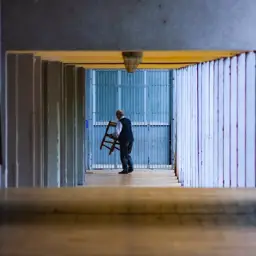Nil’s Approach to Serve
We combine intuition and analytical thinking to design context-specific solutions developed after careful diagnostics and following an iterative process of design, testing, and adoption.
We know that non-linear problems cannot be solved using a sequential approach. So we start by unlearning old assumptions and work through the design thinking approach.

5D Solution Designing
We follow a design approach consists of the following Ds.

DIAGNOSE
Evaluating the context, and immersing ourselves into the environment of our communities helps us understand them and their issues better. Their immediate and external-environment narrates their behaviour, leaving us with insights that are specific to that community.

DECONSTRUCT
We analyze the conditions that determine the community's behavior and pinpoint the right problem after careful observation. With this information, we explore all possible points of re-entry identifying those that will lead to effective results,

DESIGN
Based on careful observation, we design prototypes that often consist of different elements allowing us to experiment and understand what works and what does not. We design an array of solutions that suit the environment of our target communities.

DISTILL
Testing forms a crucial stage of our design process. Our extensive reach and deep connect with the communities help us test these solutions and refine them, based on the response of the communities, until we reach a suitable answer.

DELIVER
We conclude our process by recognising sustainable ways of implementing the solution. Identification of the right delivery channels plays a huge role in ensuring effectiveness of our design thinking approach.

Our Offerings
Our focus is to engineer simple yet effective tools that trigger lasting impact. An integral part of our solutions is framing effective models of delivery which are resourceful and augment reach and uptake of solutions.

Research for Design
We identify the root of the problem which allows solutions to unfold and impact to grow. With this, we create alternate narratives with people at its centre. These context-based narratives have helped our partners design projects that are more effective in reaching the desired impact.

Human-Centric Tools
Our tools enable actors to bond with specific communities, plan solutions with them, and monitor the progress of these solution. These tools help learn about the direction and magnitude of impact, as narrated by the community. Equipped with these our partners can make incremental changes to the interventions that augment the effect of the solution.

Design Products and Experiences
Nil is geared towards using design as a tool to build an ecosystem of services for low-income households to expand their freedom and realise their own capabilities. We are currently examining ways to unbox design elements to enhance health and nutrition service experiences, design interactive spaces for youth, and create tailored solutions for livelihood opportunities for rural households.